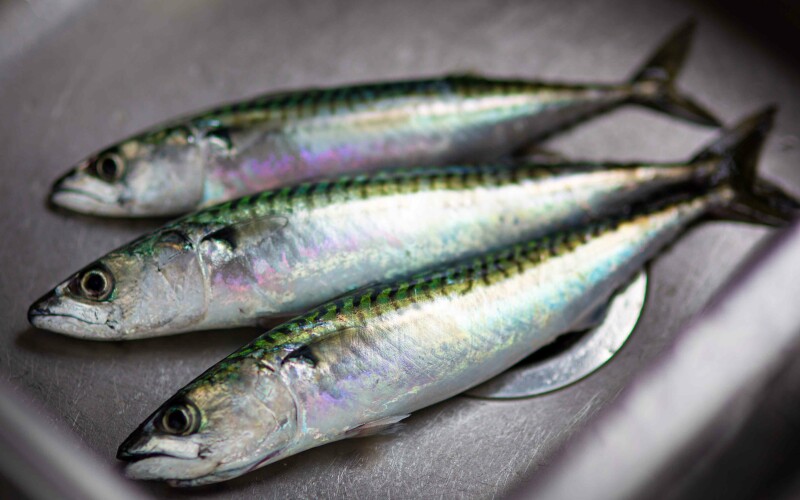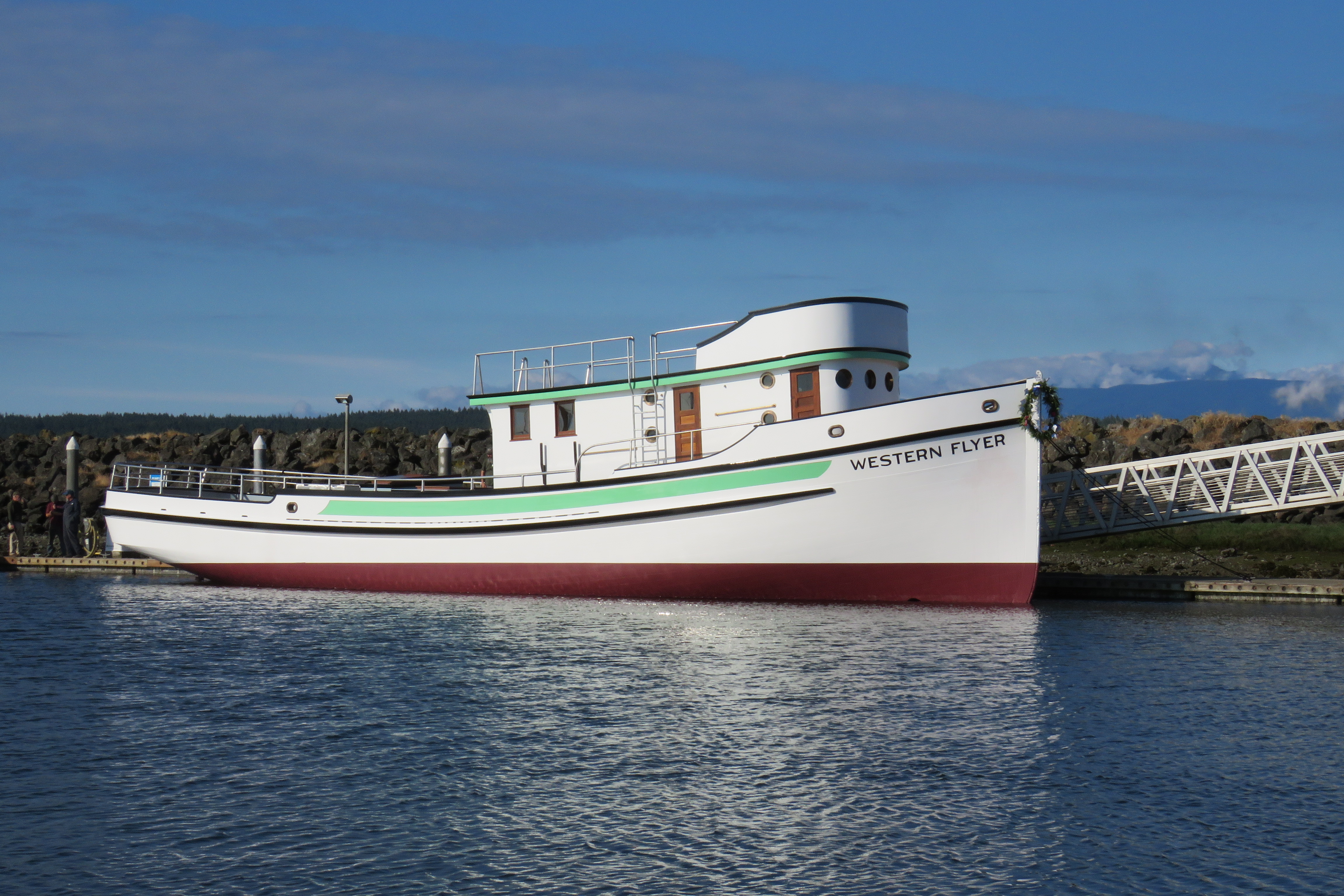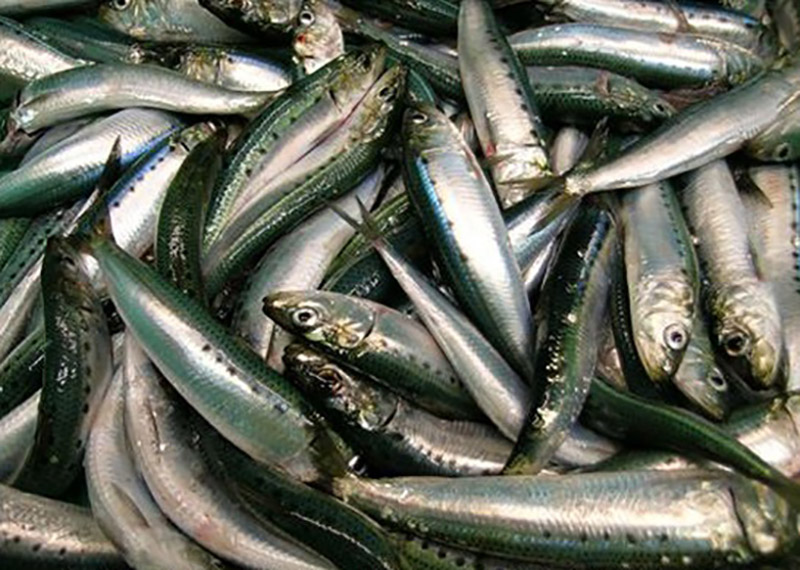Steinbeck's storied sardine vessel returns to Monterey, Calif.
Published onMonterey, CA. Shes coming home at last! After being away for 75 years, the historic Western Flyerthe sardine fishing boat immortalized by John Steinbecks 1951 classic The Log from the Sea of Cortezwill return to her home port of Monterey on Saturday, November 4th. Read more
Read MoreReturn of the Western Flyer
Published onThe 85-year-old sardine seiner, Western Flyer, is re-launched after a massive rebuild After a seven-year rebuild at the Port Townsend Shipwrights Co-op, the Western Flyer, splashed again on June 29 of this year. Originally built in Tacoma and launched in 1937 as a state-of-the-art purse seiner for the Monterey sardine fishery, the 77-foot Western Flyer quickly became a highliner. Its probably the most famous fishing boat in the world, says the Co-ops Tim Lee. But for lots of different reasons. For many people the Western Flyer is an almost mythological boat, not because of its success landing sardines, but because in the summer of 1940, writer John Steinbeck and biologist Ed Rickets chartered the boat for a six-week cruise to Mexico that became the basis for Steinbecks book, Log of the Sea of Cortez. With funding from John Greggs ...
Read MoreOceana sues NMFS over California sardine management
Published onAlleging that West Coast fisheries managers are repeating mistakes of the past half-century, the environmental group Oceana is suing NMFS over its approval of the latest sardine management plan and demanding more action to rebuild the stock. Despite these hard lessons, NMFS repeats these management failures in Amendment 18, states the groups complaint, filed by the legal group Earthjustice July 14 in the U.S. District Court for northern California, naming Commerce Secretary Gina Raimondo, NOAA and the fisheries agency. Oceana says NMFS should not have approved the Pacific Fishery Management Councils amendment to the coastal pelagic species management plan, allowing managers to chose a suite of already disproven, status quo management measures that will keep this population at levels too low to support either the ecosystem or the primary fishery that relies on sardine for half a century or more. Basically, were dealing with a rebuilding plan thats ...
Read MoreIncidental fishery greenlit for West Coast sardines
Over the weekend, the Pacific Fishery Management Council voted to allow up to 7,000 metric tons of sardines to be caught by West Coast fishermen this year as incidental take, or bycatch. The sardine fishery has been shuttered for years after stock assessments fell below the 150,000 metric-ton threshold needed to declare a fishery. With current NOAA estimates for July 2018 —figures that will set policy for the 2018-19 season — placing the current biomass at around 52,065 metric tons, fishermen were concerned that an incidental fishery wouldn't be allowed. “We are very thankful to the council for applying the best available common sense in making its decision, especially in light of the concerns expressed during the recent [acoustic trawl] methods review and the earlier problems voiced about last year’s sardine [stock assessment review] panel review," wrote Diane Pleschner-Steele, executive director of the ...
Read MoreWest Coast sardine season shuttered for a second year
Fishermen say surveys are flawed The bad news, once again, is that the 2017 West Coast sardine season has been scuttled for lack of substantial biomass — at least from the current stock assessment modeling, which came in at 106,000 metric tons. The threshold for a directed fishery is 150,000 metric tons. “The only active fishery is the bait fishery,” says Diane Pleschner-Steele, executive director of the California Wetfish Producers Association, in Buellton, Calif. “It’s the only directed target we have right now.” Fishermen are allowed a percentage of sardines in other fisheries. The fleet harvesting anchovies can’t have more than 40 percent sardines in their catch, by weight. According to most recent data in PacFIN, fishermen from Washington, Oregon and California harvested just over 3,860 metric tons in 2015. And there aren’t many alternative species for the fleet to target in the spring ...
Read More






